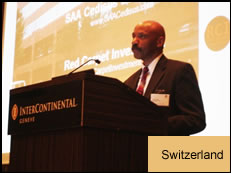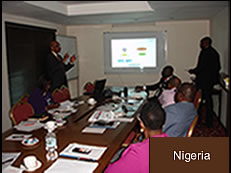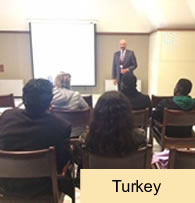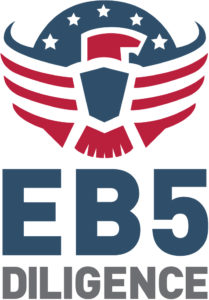What is EB-5?
The United States Citizenship and Immigration Services (“USCIS”) EB-5 Visa Program (the “EB-5 Program;” “EB-5”) was created by the United States Congress through passage of the Immigration and Nationality Act in 1990. “USCIS” sets aside 10,000 visas per fiscal year for immigrant investors to obtain citizenship through the EB-5 Program. The EB-5 Program is currently being administered by “USCIS”, an agency of the Department of Homeland Security. See https://www.uscis.gov/eb-5 for more information.
The EB-5 Program was created to make visas available to foreign investors who invest $1,800,000 or $900,000 (if project is located within a Targeted Employment Area – TEA), and that U.S. business must create 10 full time jobs per investor. EB-5 investors that invest through designated Regional Centers are permitted to count jobs created both directly and indirectly by the qualifying investment.
The EB-5 Program offers you an opportunity to apply for a Green Card” and start on the path to becoming a United States Citizen. A green card allow a person to live and work in the U.S. An accredited investor can apply for a U.S. green card through the EB-5 program. There is no sponsor needed for the EB-5 Program.
The EB-5 program provides an immigrant investor with many benefits, not the least of which is the opportunity to obtain a green card and the path to citizenship. An EB-5 applicant is investing in a private placement of securities, which provides funding for a project that has a positive impact on America by creating jobs. One of the obligations of an EB-5 project sponsor is to commission a study that confirms the plan will create 10 jobs (whether directly or indirectly) over a period of time for each EB-5 investment made. The investment is also a “passive investment,” meaning you as the investor do not take an active role in the investment or the project. Please read carefully and thoroughly the investment offering materials and subscription documentation specific to the particular investment prior to making the investment. EB-5 investments are typically low-interest loans to a construction project. It is an at risk investment, meaning you could lose your entire investment if the project does not succeed (Please see Important Disclosure Information below).
By working with SAA Cedisus, you and your financial advisors and/or immigration attorneys will become a part of efficient and effective process by which you will able to review and analyze the best scoring deals that are suited to your particular investor suitability profile (Please see Affiliated Due Diligence Firm below).



EB-5 Visa Requirements
A foreign investor must ensure that each investment meets specific “USCIS” requirements in order for the investment to qualify the applicant for permanent residency through the EB-5 Program. In general, the investor must meet capital investment amount requirements, and ensure that the project investment meets the job creation requirements and qualifies for the EB-5 Program overall. The EB-5 visa applicant, spouse, and children under the age of 21 will have the opportunity to obtain a permanent residency green card under the one investment once all requirements have been successfully met and approved by the “USCIS”.
To meet EB-5 investor visa requirements, foreign investors must make an “at risk” capital investment in a for-profit U.S. business entity. The required investment amount ranges from $900,000 to $1.8 million, depending on which project you invest in. If you invest in a targeted employment area the investment is currently $900,000, if you invest elsewhere the minimum required investment is currently $1.8 million. EB-5 investments must lead to the creation of 10 full time U.S. jobs for at least two years.
“EB-5 investments” refer to a type of private placement investment, typically created by developers or sponsors in the construction, hospitality, or other job creating industries, that are designed to meet the requirements of the fifth among five Permanent Worker Visa Preference Categories (EB-1 through EB-5) established by the USCIS. Its official title, the Employment-Based Immigration: Fifth Preference (EB-5 Immigrant Investor Program – https://www.uscis.gov/eb-5 to find out more) offers high-net worth non-U.S. persons, including members of their immediate families, the opportunity to obtain U.S. “green-cards” or permanent residence status. Accordingly, the construction, hospitality, and other similar industries, have responded by designing private placements that raise capital for EB-5 compliant projects.
THE EXPECTED RETURN ON INVESTMENT:
 U.S. green card
U.S. green card Return of initial investment
Return of initial investment Small return on investment (ROI)
Small return on investment (ROI)

Past performance is no indication of future results. There is no guarantee that a petitioner’s application will be approved by “USCIS”, that the private placement of securities will return your investment, or that you will successfully obtain a green card for yourself or your family members. An EB-5 investment is entirely at risk.
PETITIONING PROCESS
SAA Cedisus and its associates will assist by:
- Providing suitable EB-5 investment options;
- Highlighting each deal’s terms, strengths, and risks analysis in an effective and efficient manner;
- Providing the support necessary to assist you and your advisor(s) to more easily compare and ultimately select an appropriate investment;
- Providing offering and subscription documentation.
APPROXIMATE TIMELINE
The EB-5 investment process may generally take 5-7 years. See link for more information – https://www.uscis.gov/working-united-states/permanent-workers/employment-based-immigration-fifth-preference-eb-5/eb-5-investors.
Step 1 – Prepare I-526 petition (1-2 months)
Step 2 – Wait for I-526 to be Approved or Denied (20-25 months)
Step 3 – Upon approval get Conditional Green Card (4-9 months)
Step 4 – Conditional Permanent Residence Period (21-24 months)
Step 5 – Removal of Conditions on Lawful Residence Status (24-28 months)
All times are approximate and may change based upon the circumstance of each applicant.
RETURN ON INVESTMENT
EB-5 private placement investments are usually at-risk debt instruments with an investment period of anywhere from five-to-seven years that might pay an interest rate of anywhere from 0.5% to 1% annually. The immigrant investor would make such an investment with the placement issuer while simultaneously submitting, typically through their immigration attorney, the EB-5 application to “USCIS”.
THE OPPORTUNITY FOR U.S. CITIZENSHIP
By receiving a Green Card, you will have the opportunity to work with your immigration attorney to apply for US citizenship. Typically, this can be done once you have resided in the United States for at least five years. The opportunities and obligations afforded a permanent U.S. resident and citizen are the reason for the EB-5 Program. You are free to travel the nation, seek employment where it can be found, and to provide primary and secondary public school education for your children. You and your children would also have the opportunity to study (and obtain many more financial aid package opportunities available) at one of the many fine institutions of higher learning across the country. By investing in America you are provided an opportunity to seek participation in the American experiment. Talk to your immigration attorney about your plans for the future and review the “USCIS” web site to find out more.
EB-5 Private Investment Opportunities
The EB-5 Program requires that investments be made in new commercial enterprises, which are entities started after November 29, 1990, for the purpose of conducting lawful commercial business activity. Nearly any legitimate business qualifies (from any industry) including real estate development, hotel operations, assisted living, manufacturing, research and development, retail, or services (see About the EB-5 Visa Classification – https://www.uscis.gov/working-united-states/permanent-workers/employment-based-immigration-fifth-preference-eb-5/about-eb-5-visa-classification to find out more).
In order for a business to be a realistic candidate for the EB-5 Program, it must be able to create or save at least 10 full-time jobs for U.S. workers for each EB-5 investor. “USCIS” requires an economic report that demonstrates the new EB-5 project will have a likelihood of creating the required jobs and will not cause other jobs in the area to be lost, the EB-5 application to the “USCIS” (Please see Important Disclosure Information below).
The immigrant investor must establish that he or she is the legal owner of the capital invested. Funds may come from legal business, salary, investments, property sales, inheritance, gifts, loans, or other lawful means. All capital shall be valued at fair-market value in United States dollars. Assets acquired, directly or indirectly, by unlawful means (such as criminal activities) shall not be considered capital for the purposes of section 203(b)(5) of the Act.
EB-5 visa applicant must have invested or be in the process of investing the requisite amount of lawfully obtained capital at the time of filing their I-526 petition. It is not enough to demonstrate that the investment is fully committed. The I-526 investor petition must be accompanied by evidence establishing that the capital has been placed at risk. There is no precise definition of “at risk” in the statute. The general understanding of what is meant by “at risk” is that the funds must be committed with no guarantee of a return or redemption. When the evidence demonstrates that the investor faces both a risk of loss and a chance of gain, the investment is considered to be at risk.
An Accredited Investor would receive a Private Placement Memorandum (“PPM”). This document discloses critical information to potential investors ensuring they are properly informed regarding the company’s operations, investment risks, SEC disclosures, and offering terms prior to investing. A private placement memorandum will also have Exhibits to disclose additional needed information critical to the investment decision such as historical and projected financials, subscription documents, related contracts, company bylaws, and other pertinent supporting data. (Please see Important Disclosure Information below).
Accredited Investors
All EB-5 private placement investment products are available, generally, to Accredited Investors, who are financially sophisticated investors.
To be considered an Accredited Investor, one must have a net worth of at least US$1,000,000, excluding primary residence, or have income at least $200,000 each year for the last two years (or $300,000 combined income if married), and the expectation to make the same amount the following year.
Updating the Accredited Investor Definitions
Aug. 26, 2020
The Securities and Exchange Commission adopted amendments to update and improve the definition of “accredited investor” in the Commission’s rules. The amendments to the accredited investor definition add new categories of qualifying natural persons and entities and make certain other modifications to the existing definition.
The amendments to the accredited investor definition in Rule 501(a):
- add a new category to the definition that permits natural persons to qualify as accredited investors based on certain professional certifications, designations or credentials or other credentials issued by an accredited educational institution, which the Commission may designate from time to time by order. In conjunction with the adoption of the amendments, the Commission designated by order holders in good standing of the Series 7, Series 65, and Series 82 licenses as qualifying natural persons. This approach provides the Commission with flexibility to reevaluate or add certifications, designations, or credentials in the future. Members of the public may wish to propose for the Commission’s consideration additional certifications, designations or credentials that satisfy the attributes set out in the new rule;
- include as accredited investors, with respect to investments in a private fund, natural persons who are “knowledgeable employees” of the fund;
- clarify that limited liability companies with $5 million in assets may be accredited investors and add SEC- and state-registered investment advisers, exempt reporting advisers, and rural business investment companies (RBICs) to the list of entities that may qualify;
- add a new category for any entity, including Indian tribes, governmental bodies, funds, and entities organized under the laws of foreign countries, that own “investments,” as defined in Rule 2a51-1(b) under the Investment Company Act, in excess of $5 million and that was not formed for the specific purpose of investing in the securities offered;
- add “family offices” with at least $5 million in assets under management and their “family clients,” as each term is defined under the Investment Advisers Act; and
- add the term “spousal equivalent” to the accredited investor definition, so that spousal equivalents may pool their finances for the purpose of qualifying as accredited investors.
The amendment to Rule 215 replaces the existing definition with a cross reference to the definition in Rule 501(a). See https://www.sec.gov/news/press-release/2020-191 for more information.
Our Founder

SAA Cedisus EB-5 Projects was founded by Jerry Clark. Mr. Clark stands ready to assist you and your financial advisor and/or immigration attorney to discover an EB-5 private placement investment opportunity that is right for you. You will have the opportunity to review and analyze a significant number of EB-5 Program eligible investment opportunities


Before becoming an entrepreneur, Mr. Clark worked in television as an Engineer and was a Manager/Business Analyst at Mead Johnson Nutritionals, a former subsidiary of Bristol-Myers Squibb. He served on the Evansville Housing Authority Board of Commissioners for eleven years and as Chairman for two years. Mr. Clark is a graduate of Ivy Tech Community College, ITT Technical Institute and the University of Southern Indiana. He is a Certified Purchasing Manager (C.P.M.) through the Institute of Supply Management and a Certified DDI Facilitator through Development Dimensions International. Raised in Muhlenberg County, Ky, Clark now resides in Lexington, KY.
Check the background of your broker, Pinnacle Capital Securities, or its representatives on FINRA’s BrokerCheck.
Affiliated Due Diligence Firm
SAA Cedisus EB-5 Projects and Jerry Clark can make available to EB-5 visa applicants some of the best deals in the market. We have access to detailed due diligence reports created from an independent EB-5 diligence firm and further reviewed by our broker-dealer. Based on your input and needs, your investment professional will help you determine which projects are most suitable for your review and analysis. Choosing a project and making the requisite investment are two key elements in fulfilling the EB-5 visa application requirements.
Hours of Operation
Hours:
Monday to Friday:
8am – 5pm EST
Phone:
+1 (859) 230-1100
GMT -04:00
Email:
jclark@saacedisus.com

Important Disclosure Information
AN INVESTMENT IN A PRIVATE PLACEMENT OF SECURITIES THAT IS CREATED SPECIFICALLY FOR APPLICANTS TO THE UNITED STATES CITIZENSHIP AND IMMIGRATION SERVICES (“USCIS”) FIFTH PERMANENT WORKER VISA PREFERENCE (“EB-5”) PROGRAM ARE SPECULATIVE INVESTMENTS AND INVOLVE A HIGH DEGREE OF RISK. INVESTORS MUST BE PREPARED TO BEAR THE ECONOMIC RISK OF SUCH AN INVESTMENT FOR A LONG PERIOD OF TIME AND BE ABLE TO WITHSTAND A TOTAL LOSS OF THEIR INVESTMENT. IN ADDITION, THERE IS NO GUARANTEE THAT AN INVESTOR’S EB-5 APPLICATION WILL BE APPROVED BY THE USCIS. PLEASE SEE ALL OFFERING DOCUMENTS FOR COMPLETE INFORMATION.
SAA Cedisus EB-5 Projects has been designed for informational purposes only and does not constitute an offer to sell nor a solicitation of an offer to buy any security that may be referenced herein. Such offers can only be made pursuant to a qualified investor receiving official offering and subscription documentation where lawful under applicable law. Pinnacle Capital Securities and its affiliates do not intend to provide investment advice through this site and do not represent that any securities or services mentioned, discussed, or otherwise are suitable for any investor. Pinnacle Capital Securities and its affiliates do not, and this site does not intend to, render tax or legal advice.
SAA Cedisus EB-5 Projects provides information about investment projects throughout the United States that are offered pursuant to the EB-5 program administered by the U.S. Citizenship and Immigration Services (“USCIS”), created by Congress in 1990 to stimulate the U.S. economy through job creation and capital investment by foreign investors. Under a program initially enacted as a pilot in 1992, and regularly reauthorized since then, investors may also qualify for EB-5 classification by investing through regional centers designated by USCIS based on proposals for promoting economic growth. On May 5, 2017, the President signed Public Law 115-56 extending the Regional Center Program through September 30, 2018. For more information please see www.uscis.gov
“EB-5 investments” refer to a type of private placement investment, typically created by developers or sponsors in the construction, hospitality, or other job creating industries, that are designed to meet the requirements of the fifth among five Permanent Worker Visa Preference Categories (EB-1 through EB-5) established by the USCIS. Its official title, the Employment-Based Immigration: Fifth Preference (EB-5 Immigrant Investor Program – https://www.uscis.gov/eb-5 to find out more) offers high-net worth non-U.S. persons, including members of their immediate families, the opportunity to obtain U.S. “green-cards” or permanent residence status. One of the requirements of this specific visa category is that the applicant must invest (typically US $900,000) in a new commercial business that generates 10+ jobs per investment for U.S. workers. Accordingly, the construction, hospitality, and other similar industries, have responded by designing private placements that raise capital for EB-5 compliant projects. EB-5 private placement investments are usually at-risk debt instruments with an investment period of anywhere from five – seven years that might pay an interest rate of anywhere from 0.5% to 1% annually. The immigrant investor would make such an investment with the placement issuer while simultaneously submitting, typically through their immigration attorney, the EB-5 application to the USCIS.


